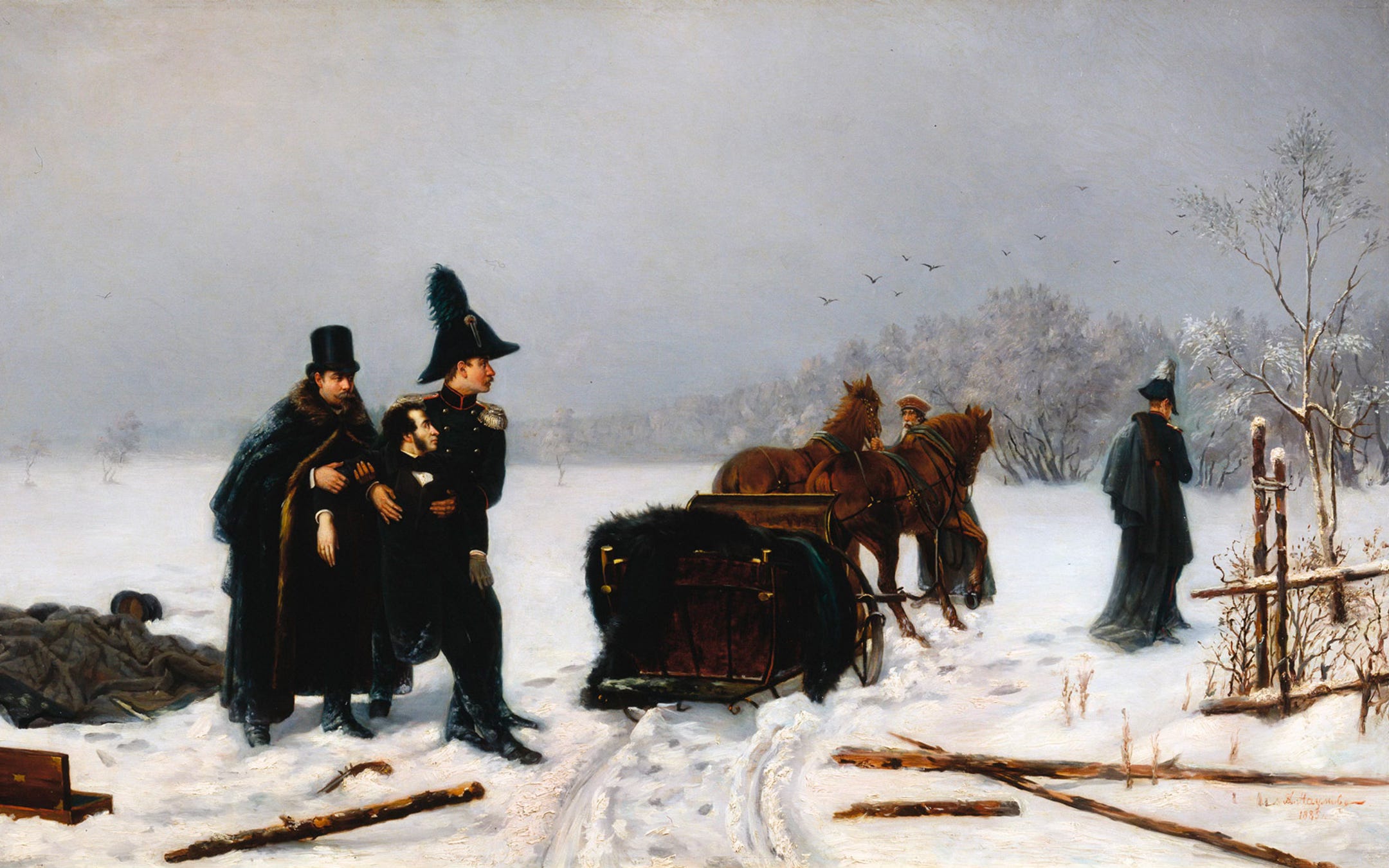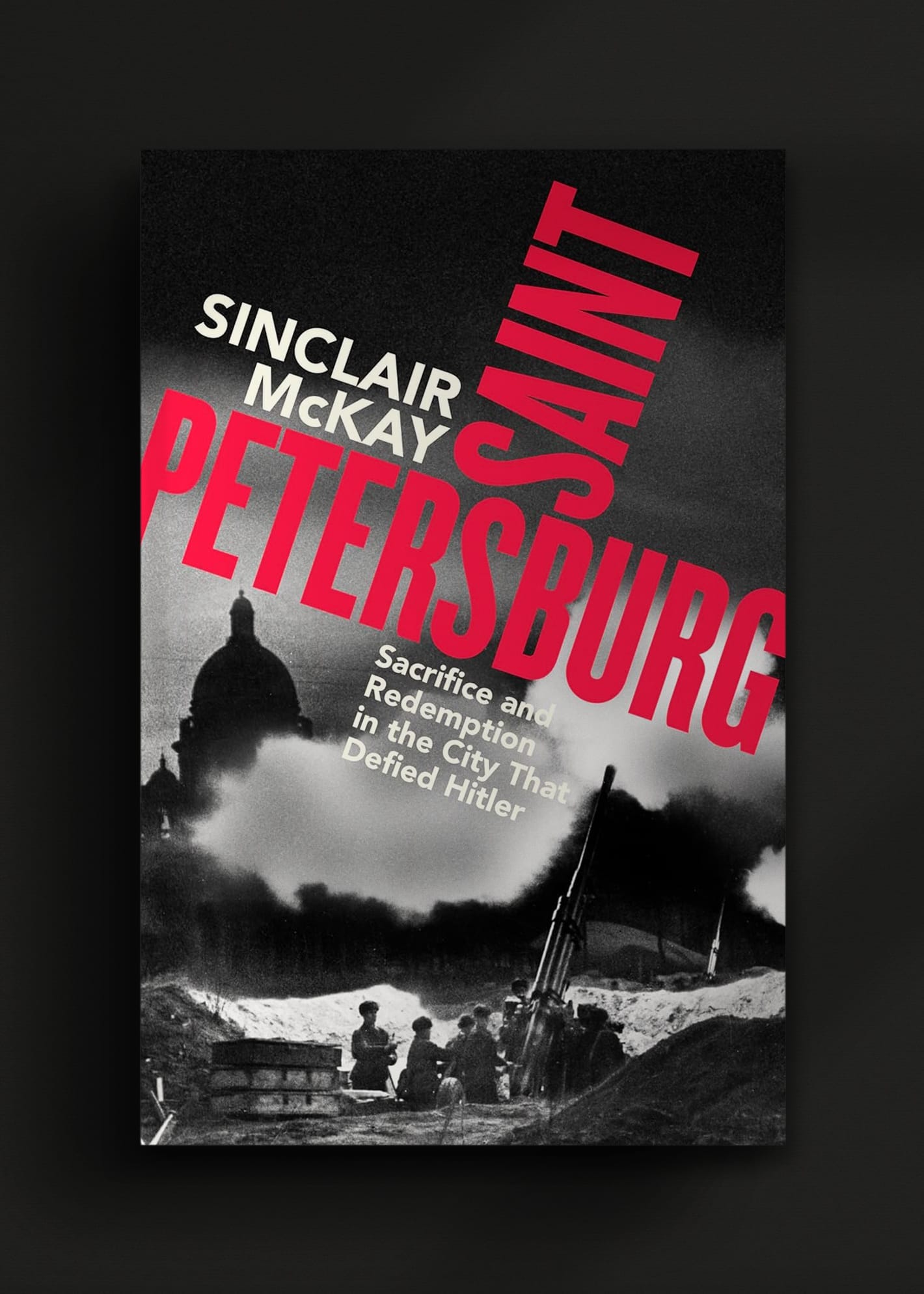Alexander Pushkin and the City of Death and Beauty
Sinclair McKay explores the significance of one of Russia's great poet's death to the people of Saint Petersburg
Few cities have withstood as much as Saint Petersburg. During World War Two the siege the Nazis laid upon it between 1941-4 was unlike anything that had gone before in human history.
Out of this suffering, and the resolve the people of the city displayed, rose one of Russia's great national stories.
This was a story of pride and endurance. Few could suffer like the people of Saint Petersburg and still emerge triumphant.
But the city is not just about resolve. As Sinclair McKay explains in his new history of Saint Petersburg, it is also a place of creativity.
Few personify this singular spirit as well as the poet and playwright Alexander Pushkin.
With an introduction by Sinclair McKay
I have Russian friends with links to Saint Petersburg. The city, for them, is a constant source of fascination. Not just because of the aesthetic splendour, but also because of its numinous, occasionally unsettling atmosphere.
They also observe that its art-loving citizens share one indomitable Russian characteristic: the ability to bear suffering long after all their enemies have fallen. There are echoes everywhere of the WW2 Siege of Leningrad, the longest and most terrible in history. This lasted from 1941-44, some 900 days.
The number of deaths, most through starvation, as the Nazis encircled the city, was reckoned at over one million.
But those who survived this nightmare ordeal: what lay at the root of their endurance? One diarist at the time declared that she and her fellow citizens were ‘Scythians’ – raw, dirty, noble, descendants of the mighty warrior nomads that thousands of years back had swept across these lands.
But underneath this hardness lay the constant Petersburg quest for artistic succour, like plant tendrils reaching for the light: as the siege went on, the city’s theatres and ballet companies re-started. Shostakovich’s Seventh Symphony had its premiere there in 1942 as the Nazi bombs still fell.
On top of this, even in all its darkest hours – from Stalin’s Great Terror and back through the decades and centuries to the earlier cruelties of Tsarist rule - this was always the most self-consciously literary city.
And this was a city that always prized its poets: even as those poets themselves also suffered terribly.
— Sinclair McKay
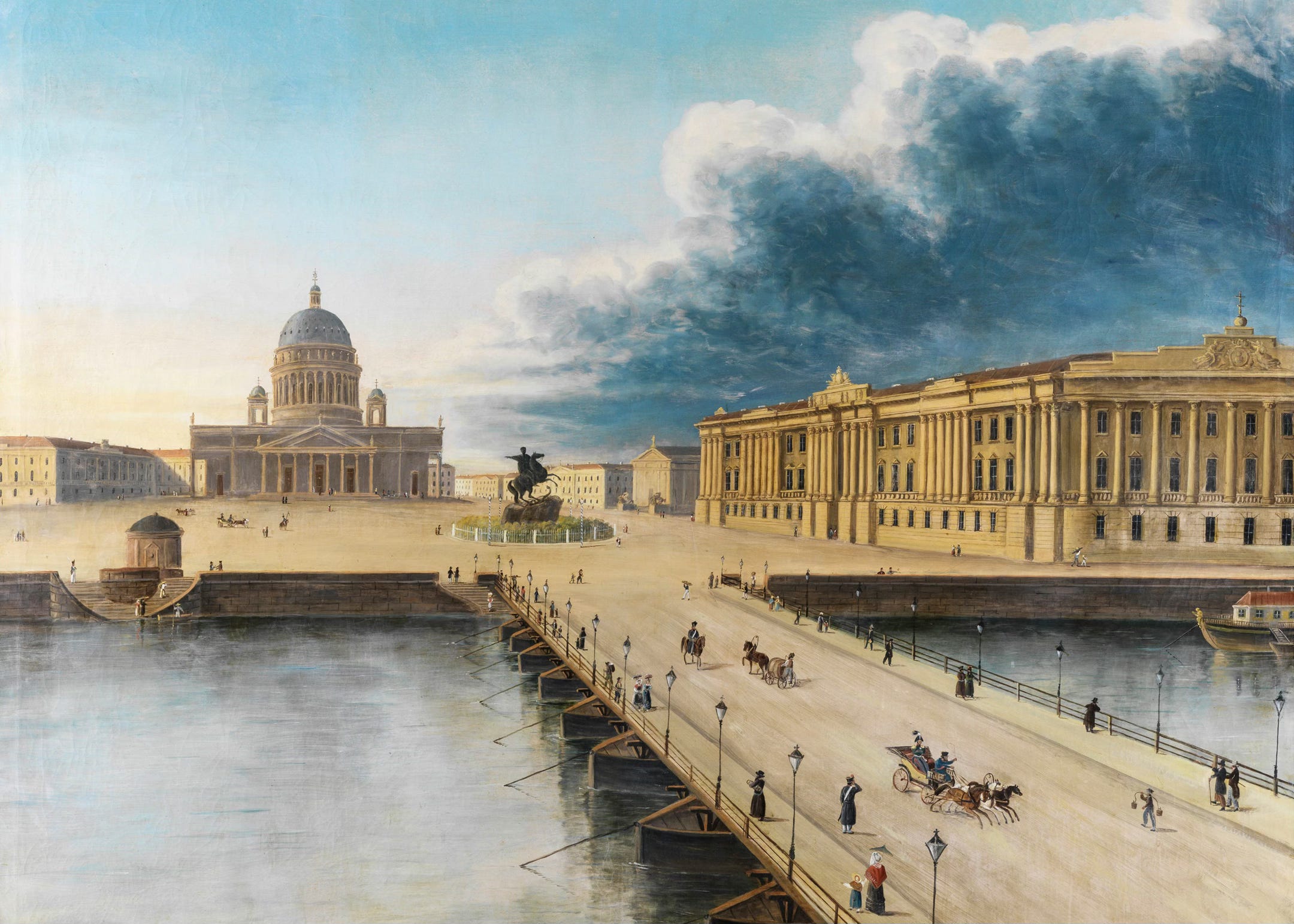
Excerpted from Sinclair McKay’s Saint Petersburg: Sacrifice and Redemption in the City that Defied Hitler
For references please consult the finished book.
The people saw nothing strange in the mingling of beauty and death. Perhaps this was an element in their unusual resilience.
St Petersburg’s history, the city’s very foundations, had been shaped by violent events through the centuries. It was as if the rich splendour of the palaces, the glow of the theatres, were underscored by a continuous insistent sense of mortality.
Violence was hardly unique to Leningrad as a city; yet it was unusual in forming so vivid a part of its historic understanding of itself. This extended to assassinations, to mutinies, from a dismembered Tsar to a gothically slaughtered shaman, and thence to revolution and all its agonizing aftershocks. It was a city of unusual, sometimes uncanny passion. This was natural, and this was life.
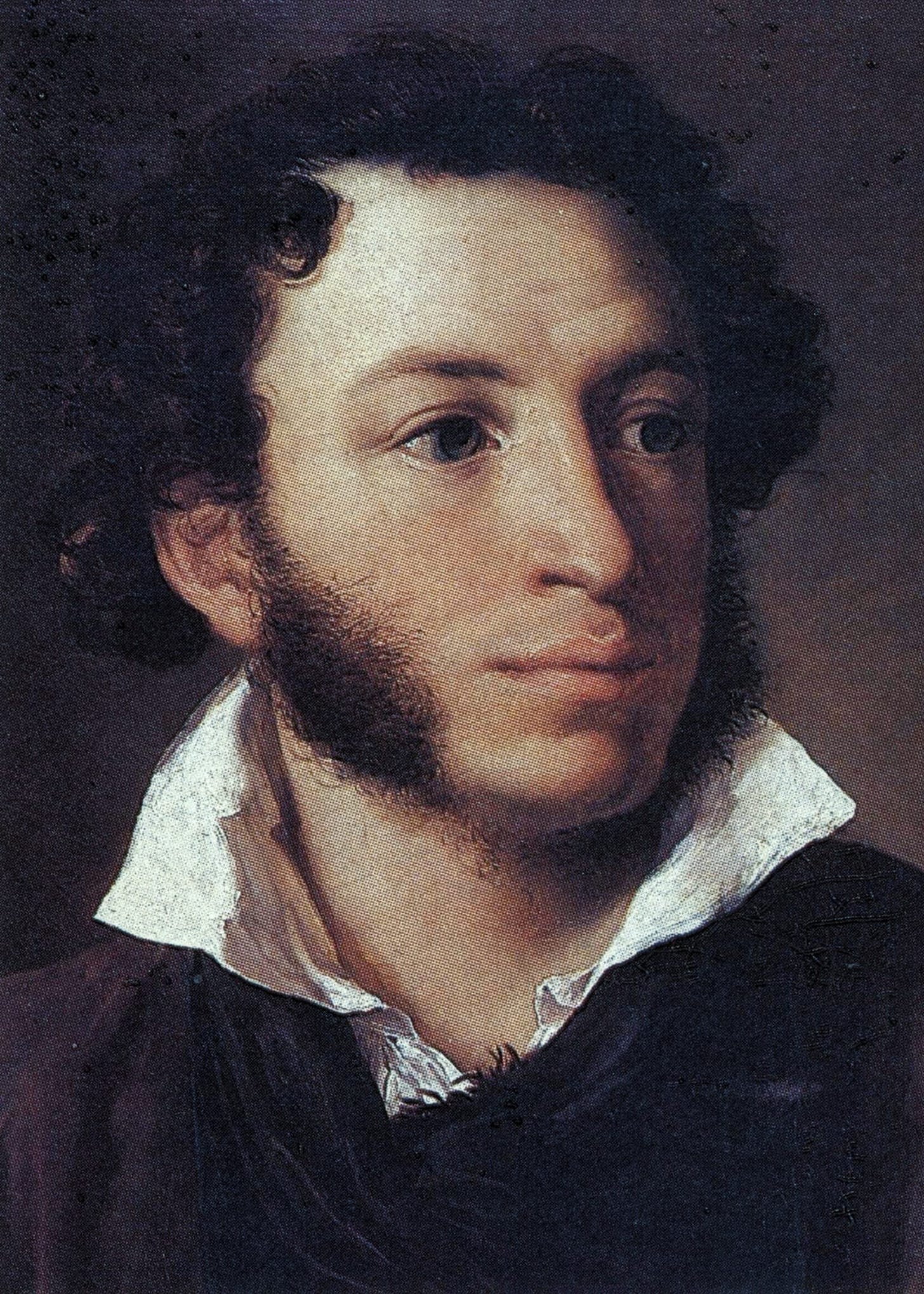
The bloody end of one of the city’s most emblematic figures – Alexander Pushkin – was taught to all of Leningrad’s children as a lurid example of courage and stoicism. They were taught about the white snow starkly blotched with crimson, the blood issuing from Pushkin’s side, so hot that the snow hissed.
The greatest writer in Russia– one of the world’s greatest– had been shot. Yet even in his agony, he somehow managed to pull himself upwards, pull his pistol from the snow and fire back, wounding his opponent.
This had been in a duel in 1837. By 1941, Pushkin and his work and his death were being reframed as part of a new nationalist morale- building exercise. The gunshot that ended his life was one of a series of historic incidents that were to be understood as symbolizing endurance and suffering.
And thanks to Stalin, Pushkin – a writer with direct African lineage who delighted in his own ‘African strangeness’ – had been elevated almost to the status of a secular saint.
Pushkin was born in 1799 and lived his life under the alternating displeasure and favour of the Tsar. And his work was frequently suffused with an element of the macabre. He was St Petersburg’s first prominent example of what the critic George Steiner called ‘conscience under despotism’.
His best- known work, Eugene Onegin, a novel in verse form, first serialized, then published in full in 1833, evoked a world that must have seemed dazzlingly alien to his later twentieth-century Soviet readers.
Onegin is a wealthy St Petersburg dilettante who forms an intense friendship with a young poet called Lensky and subsequently, in a tragic series of events, involving the sisters Olga and Tatyana, kills Lensky in a snowy pre- dawn duel.
‘The poet stops/ And silently his pistol drops,’ wrote Pushkin. ‘He lays a hand, as in confusion/ On breast, and falls. His misted eyes/ Express not pain, but death’s intrusion./ Thus, slowly, down a sloping rise/ And sparkling in the sunlight’s shimmer/ A clump of snow will fall and glimmer.’
The doomed romanticism of duels haunted Russian culture in the early nineteenth century. Impulsive Pushkin had himself been in thirty such encounters (despite their illegality), ultimately without shots being fired. But his death at the hand of French officer Georges d’Anthès (who was serving in the Russian Guard) in February 1837 was gruelling and strung out.
The scene itself might have been a remarkable reminder of Onegin : the starlit pre-dawn Petersburg sky, the snow in the darkness of that forest clearing. But as the duel got underway, romance turned to visceral nightmare.
D’Anthès fired first, and the bullet entered Pushkin’s lower abdomen. It passed through his intestines but failed to exit through his back. In the initial shock, he was able to grab for his dropped pistol, wipe the snow off it and take aim at his opponent. The bullet caught d’Anthès in the arm; the wound was slight.
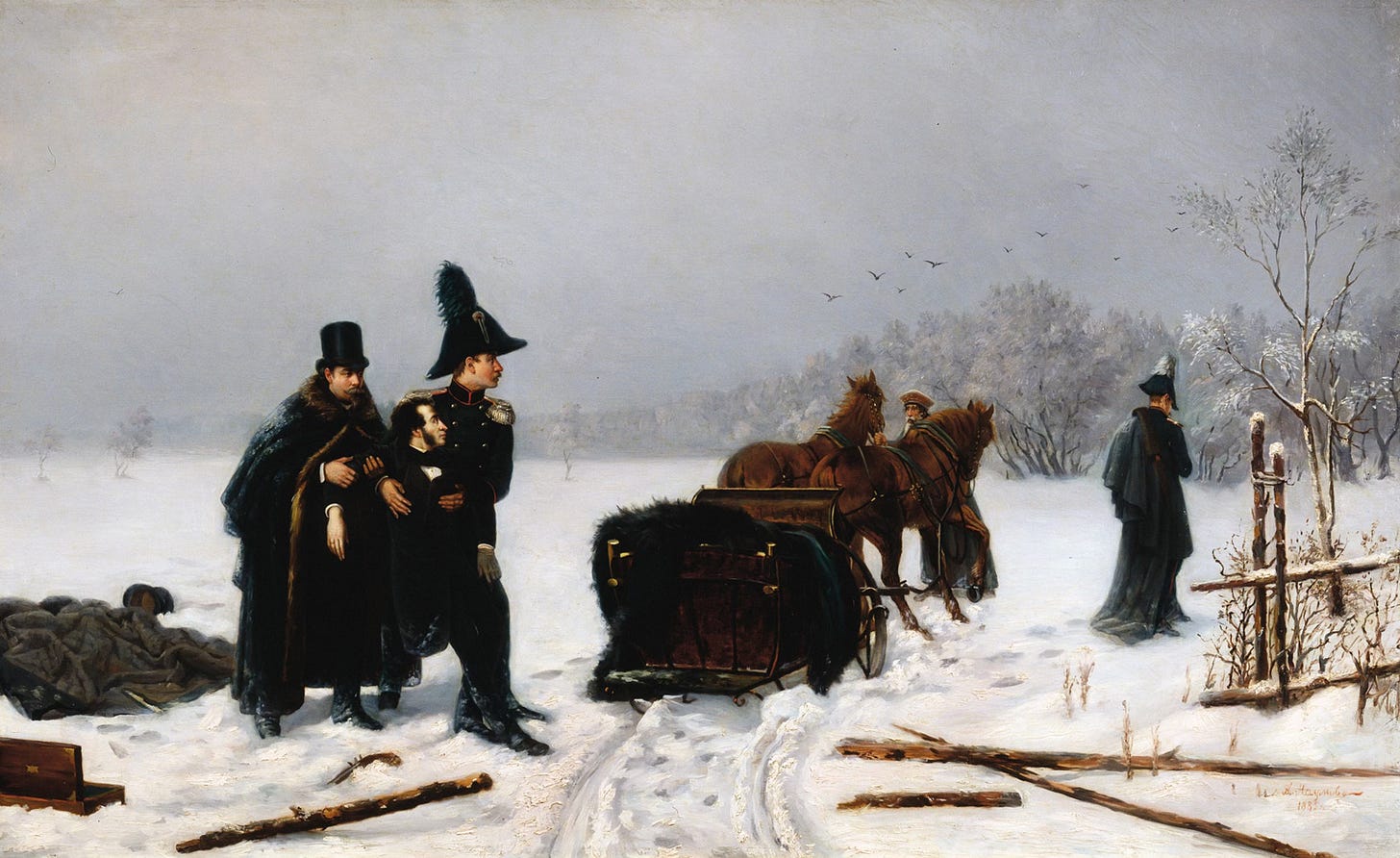
It was clear, however, that Pushkin was in a serious state. Friends carried him back to his apartment near the Winter Palace; a doctor was summoned. The bullet could be felt under the flesh of his back. Pushkin was told that there was nothing that could be done.
He made ready for death, sending word to Tsar Nicholas asking for forgiveness and also beseeching that his wife be looked after financially. The request was granted. Pushkin’s final night was one of horror: the bullet, having burned through so much soft tissue, caused peritonitis and he spent his last hours in agony. By morning, he was dead.
Pushkin had had his revolutionary enthusiasms. The writer had backed the so- called Decembrists. These were army officers – educated, aristocratic – who loathed the Tsarist system of serfdom. They rose up in St Petersburg on 26 December 1825, but their number was insufficient for the revolt to depose Nicholas and they were all rounded up, with many being sent into Siberian exile.
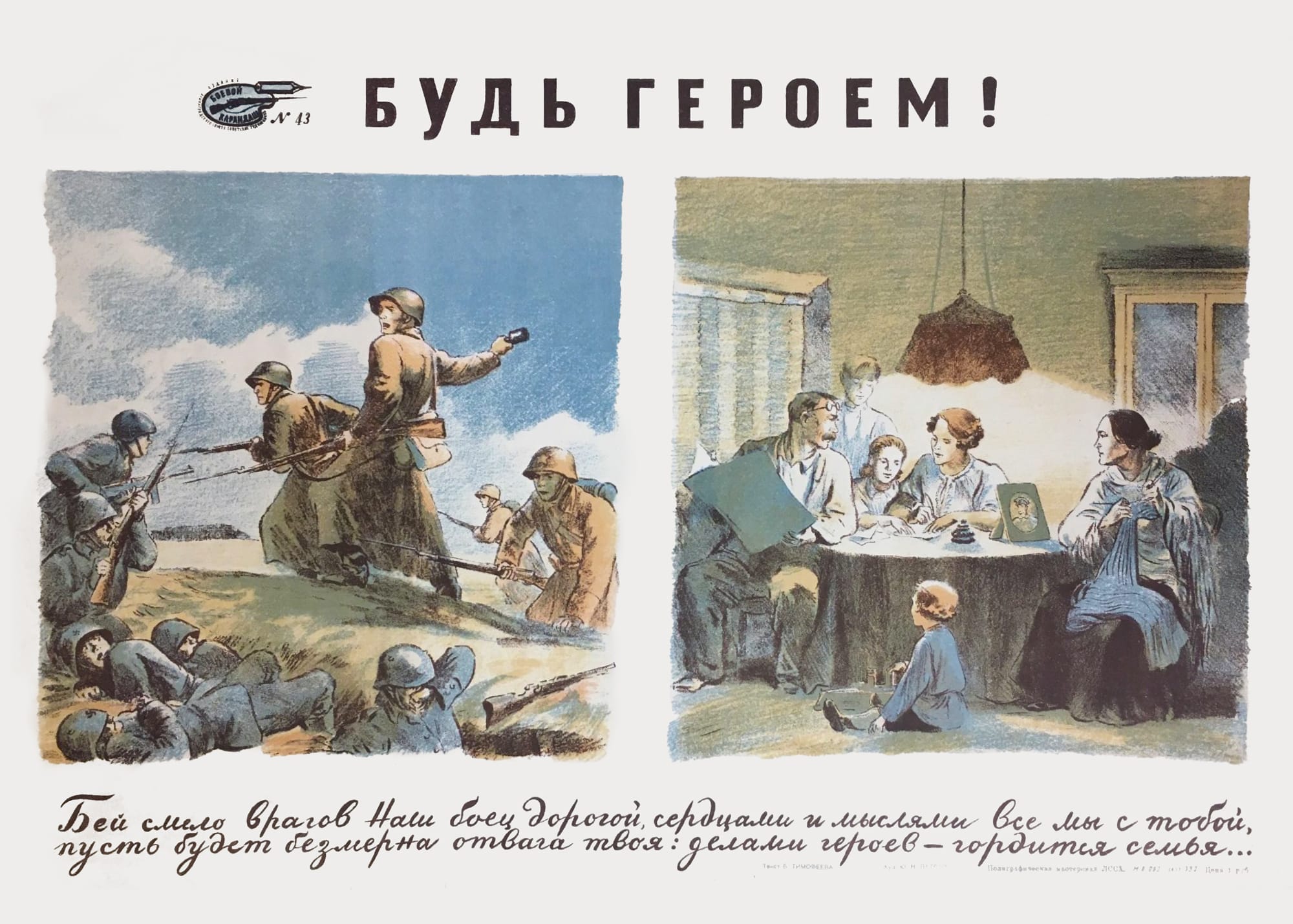
Pushkin’s fervent support, conveyed in letters to Decembrist friends, earned him the Tsar’s anger and a long period down south in the Caucasus, but also a place in Russian revolutionary tradition.
This was duly noted by Stalin, who had always admired and never abjured Pushkin’s work. And as Soviet Russia in the twentieth century squared up to the fresh prospect of war, a heated conversation on a Leningrad train in the late 1930s illustrated where Pushkin stood in the Soviet imagination.
There had been a sing-song at the end of the carriage: an old Russian folk tune (of the type that had not been encouraged by the Soviet regime, on the grounds of its backward- looking nostalgia).
It prompted one man to tell the group: ‘You sing well, but it’s old stuff – he who thinks of the past is a fool.’
‘But he who forgets the past is a bigger fool,’ responded another.
The first complainer felt he had to explain his ideological stance. ‘But you’re wrong in saying that,’ he told the singer. ‘We need cheerfulness for our new way of life and look what you’re doing. You’re resurrecting the past. Forget the past.’
The singer could not agree: ‘What about Pushkin?’
The complainer was only too pleased to explain. ‘Pushkin was an isolated case,’ he said. ‘Pushkin managed to foresee our time way back then and stood for it. He was an exception.’
‘Pushkin is ours!’ went the official declarations in 1937, on the hundredth anniversary of his death. After years in which his work had been comparatively neglected, Stalin – who had profounder reading tastes than many might have credited him with – was anxious that Soviet Russia should celebrate and embrace a literary hero who could be viewed as a genius on the level of Dante or Goethe or Shakespeare.
‘It is only in a country of socialist culture that the name of the immortal genius is surrounded with ardent love,’ the proclamation continued. ‘It is only in our country that Pushkin’s works have become a treasure for all people.’ •
Sinclair McKay is the Sunday Times bestselling author of Berlin, Dresden, The Secret Life of Bletchley Park, The Secret Listeners, Bletchley Park Brainteasers and Secret Service Brainteasers.
Unseen Histories relies on your patronage to operate. You can support us by purchasing a book via the links, from which we will receive a small commission. Thank you for your support.
Saint Petersburg: Sacrifice and Redemption in the City That Defied Hitler
Viking, 10 April, 2025
RRP: £25 | 432 pages | ISBN: 978-0241741313
“Richly-layered and packed with insight, this riveting account of terrible events tells us as much about the present as it does the past”
– Patrick Bishop
In the crucible of the Second World War, Saint Petersburg – then known as Leningrad – stands as a testament to human endurance. As the Nazis encircle the city, intent on annihilating its 1.5 million inhabitants, the narrative plunges into the harrowing 900 days and nights of relentless hardship and unyielding resilience.
Starving residents, horrified by their own gaunt reflections, resort to bulking bread with wood shavings, consuming wallpaper paste, and even turning to their pets. Workers at the mass crematorium numb their horror with extra vodka rations. Yet, amid this suffering, the resilience of culture and hope shines through, with orchestras and theatres defiantly continuing their performances, a flicker of humanity against the backdrop of despair.
This book not only chronicles the Siege of Leningrad but also traces the pivotal importance of Saint Petersburg across the centuries. From Peter the Great’s visionary founding of the city, through its revolutionary rebirth as Petrograd and its Soviet identity as Leningrad, to its renaissance as Saint Petersburg in the post-Soviet era, we explore the layers of history that shape this extraordinary place.
“McKay is a gifted writer; his prose has the cadence, tone and power of a Shostakovich symphony. Horror is majestically conveyed” – The Times
“McKay's magisterial history of Peter the Great’s monumental gift to Russia will become a classic” – Amanda Foreman
With thanks to Annie Lucas.
You can read all our book excerpts, here.
Subscribe to Unseen Histories for the very best new history books, read author interviews and long-form pieces by the world’s leading historians.





